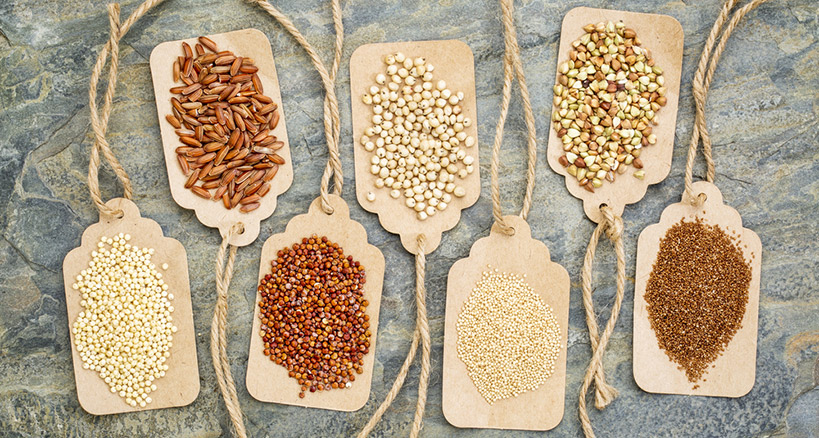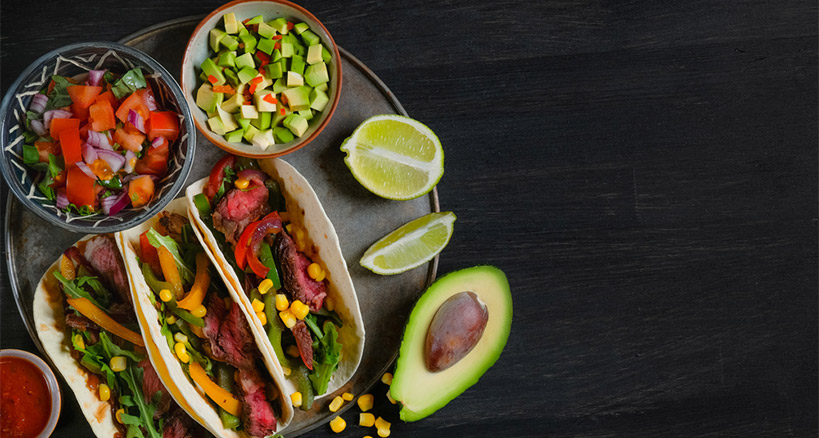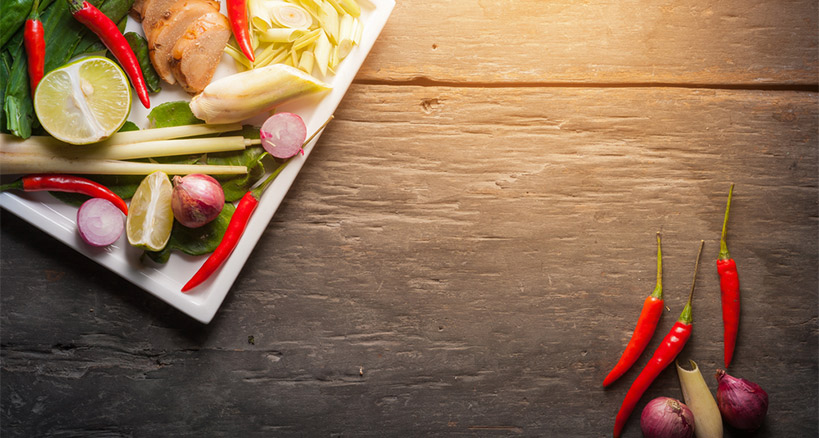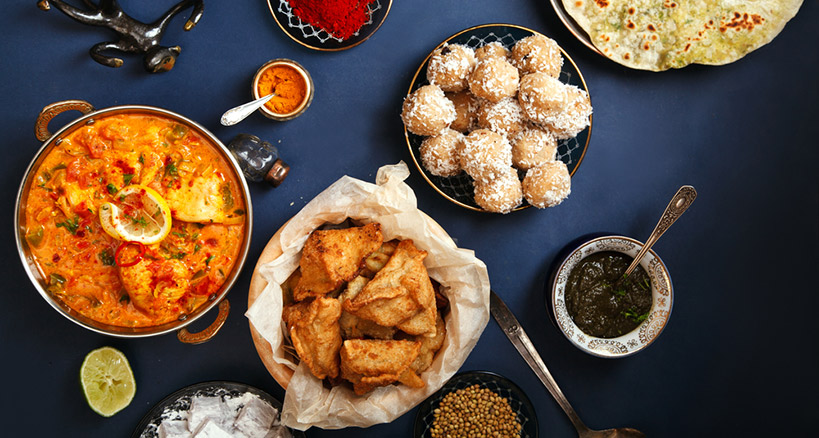
Gluten-Free Catering Cuisines
Dining out in restaurants or eating at a catered affair can be a risky proposition for anyone who is restricted to a gluten-free diet. While many restaurants and caterers offer gluten-free options – along with other offerings that take into account various food intolerances and allergies – not all take the time to train staff about the dangers of food sensitivities and to ensure that those “free-from” items are also free from cross-contamination.
These days, however, given how many gluten-free products are available – including vegetables, meat, legumes, and flour alternatives, such as cornmeal and rice flour – chefs can offer menus that are entirely gluten free, making life for a caterer whose client has gluten-free demands much easier. Caterers can offer a wide range of gluten-free cuisines, many of which we’ll discuss here, such as Mexican, Thai, and Indian.

Mexican Cuisine
Mexican and other Latin American foods are often rice and corn based, making these cuisines easy to adapt to the gluten-free diner’s requirements. Corn tortillas for tacos can be stuffed with rice, beans, chicken, and ground meat. Caterers who offer these types of foods, must ensure that they avoid flour-based tortillas; this shouldn’t be a problem as the corn product is more authentic and more readily available.
Nachos are also a great way to feed the masses at a gluten-free event, as all the ingredients – corn chips, ground beef, jalapeno peppers, beans, salsa, olives, guacamole, etc. – are safe for those who can’t eat flour-based products. However, if you’re frying up your own corn chips, be extra careful that you’re using fresh oil and a dedicated fryer. Yes, the chips don’t have gluten, but if they share a deep fryer that held gluten-coated foods, they cannot be considered gluten-free and they would therefore pose a danger to those who cannot have gluten. If you want more information about gluten-free Mexican food, the CeliaAct site, which is dedicated to helping those with Celiac disease, offers a lot of info in an article entitled, “Gluten Free Mexican Food: What’s Safe and What Isn’t.”

Thai Food: A Great Gluten-Free Option
Thai cuisine is another great dining option for those on a gluten-free diet. While other Asian cuisines – such as Japanese and Chinese – rely heavily on soy sauce, which contains flour, Thai dishes use fish sauces, such as Num Pla, for the requisite umami flavor. (Umami – a savory taste – is one of the basic tastes, along with sweet, sour, bitter, and salty.)
Thai foods also use rice in many different forms to create a variety of textures, such as rice paper for spring rolls, rice noodles for Pad Thai, and jasmine rice to serve alongside curries. Thai cuisine, with seasonings such as spicy chilies, palm sugar, and coconut, as well as the generous use of lemongrass, and ginger, can be easily adapted to the needs of gluten-free diners.
When you are shopping for the ingredients that will go into your gluten-free Thai dishes, make sure to carefully read the labels on bottles of Asian sauces. While many gluten-free fish sauces and wheat-free Tamari soy sauce exist, it’s also easily to confuse them with soy sauce or other savory sauces that may include flour. Look for rice flour, which is also referred to as sushi flour or sweet rice flour, and hunt down gluten-free rice noodles or Pad Thai noodles. It’s also easy to find gluten-free Thai recipes on the Internet, including this great recipe for Thai Coconut Brown Rice.

Indian Food: Great for Gluten-Free Diners
While naan bread – one of India’s signature foods – is off limits to gluten-free diners, other breads can be prepared or served, such as pappadum, a gluten-free crispy flatbread made from lentil or chickpea flour. Dosas, another bread-like food, are wheat-free crepes made from rice and lentil flours that are often stuffed with savory fillings.
Indian cuisine is known for its variety of soups and stews, which are perfect gluten-free choices. Some favorites are tomato shorba, a water-based tomato soup that may contain coconut milk, and dal a popular lentil-based stew that contains a variety of fried spices and vegetables. Another hearty legume-based dish is called chana masala; it is loaded with chickpeas, spinach, and a variety of Indian spices and it is sure to please gluten-free diners with a taste for the exotic.
Rice pilafs are also popular in Indian cuisine: pulao is a pilaf that contains fried rice sautéed with vegetables and other ingredients. For customers who are gluten-free and vegetarian, curd rice is a popular choice; it is a southern Indian rice dish that is made with dairy products, such as yogurt.
Italian Food: Less than Ideal
While Italian cuisine is loaded with pastas, pizzas, and calzones, which all contain gluten, native Italian chefs have been focusing on creating gluten-free dishes, as a disproportionate number of Italians have Celiac disease. A few years ago, The New York Times published an article entitled, “Gluten Free in Italy,” which talks about how prevalent Celiac is in Italy. Celiac disease, the article says, was recognized as a serious condition in Italy sooner than in the United States or elsewhere in Europe, and restaurants there are making a concerted effort to cater to their customers who have this disease. If you decide to go with an Italian menu for your gluten-free client, focus on risotto, polenta and other gluten-free dishes, as well as meat and chicken dishes that don’t include wheat flour.
Awareness Is Everything
As awareness of food allergies, sensitivities, and intolerances increases, gluten-free food continues to grow in popularity, resulting in a sharp rise in menu requests for people living with Celiac disease. When clients hire a caterer for an event, they expect their caterer to deal with all the details regarding the preparation of the food, and that includes serving gluten-free options if necessary. Safely serving gluten-free dishes involves planning and forethought – in other words, it’s not just providing menu items that are gluten-free. Begin by learning and training your staff about gluten-free protocols. Then think about how to make your gluten-free guests feel included and confident in your abilities to keep them safe from the beginning of your event to the last bite of dessert.
Yes! Italy is a haven for someone diagnosed with celiac disease !
This foods are a dish that has deep ties with Nihombashi. Soba is usually refers to thin noodles made from buckwheat flour, or a combination of buckwheat and wheat flours.